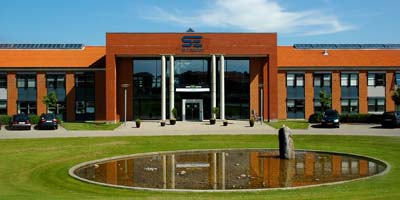Monitoring Investment Pays Off

ESBJERG, DENMARK -- SE A/S (formerly known as Syd Energi A/S) is Denmark’s third largest energy and utility company, cooperatively owned by its customers and with an impressive commitment to environmentally responsible operations. But it’s also a provider of entertainment and telephony via a major partnership role in Denmark’s WAOO! project.
WAOO! is a collaboration between 13 independent fiber-optic networks designed to facilitate high quality IPTV and VOD services to subscribers. It negotiates distribution rights, runs the IPTV middleware, hosts and delivers content, and markets the video services nationally. With the headend, transit, and encryption stages of the delivery chain operated by other WAOO! partners, the Bridge Technologies monitoring system deployed by SE is critical in ensuring that all services meet quality standards at the handover point. To achieve this, SE uses a combination of Bridge Technologies VB120, VB220, and VB330 probes throughout the chain to provide instant diagnosis and analysis of any errors in the stream.
The installed base of WAOO! users has grown rapidly. In order to gain better operating economies that can be passed on to the subscriber, SE recently purchased Stofa, the country’s second-largest TV distribution network, adding a 400 percent increase in customer numbers.

SE A/S’s headquarters in Esbjerg, Denmark Stofa also uses Bridge Technologies monitoring equipment but reaches its subscribers mainly via cable, while SE’s customers are mainly served through IP-over-fibre. This means there’s a complementary base of expertise between the two companies: because we both use Bridge systems, there’s good potential for sharing knowledge and new ways to use the technology.
In addition to its IPTV and VOD services, SE operates cable services from nine headends, delivering 66 DVB-C channels, 43 analog channels, and 36 FM channels. Cable monitoring capability is provided by SE’s monitoring installations at 28 sites, where a combination of VB120, VB220, and VB262 units are used. Combined with portable VB12-RF units for in-field diagnosis, these units provide rapid and exact isolation of problems that may arise dueto faulty wiring, or unshielded connectors in older installations at customer premises.
While SE is mainly focused on IP/fibre, we are nevertheless rolling out cable infrastructure at a rapid rate. It’s a steep learning curve with technology we are not so familiar with, unlike the fiber and IP world where we are much more comfortable. So it’s important, especially in the early stages as we build the infrastructure, to create a comprehensive monitoring structure.
Meanwhile, the Stofa people have plenty of expertise with cable, but are out of their comfort zone with fiber and IP. This is when having a top-quality monitoring system really helps.
While our IP and fiber network is rock solid, rolling out new cable infrastructure is a different thing. We can’t be everywhere all the time, so we need ‘eyes’ out in the network – and this is what the Bridge system provides. I need at all times to be able to access and interact with the system to interrogate any point in the network, and to keep a comprehensive overview.
IP is very straightforward because you can trace where the signal is coming from by interrogating the routers, looking at routing tables, and so on. But with cable it’s different because when you send out the signals, it’s a one-way street.
Most errors in the cable network are caused by equipment failures. Cable technology is stable and mature, but when you are rolling out massive amounts of hardware, hardware faults do occur in the headend.
The Bridge systems allow us to pinpoint faults quickly. This is vital for our growth--if you have a hardware fault in the network and it takes you five days to find it, the customer will suffer for that period.
Tolerances are important, and a small variation can cause an error. You might have an output of a certain dB level into the fiber and when it falls 0.5 of a dB the customer may experience ghosting, pixelation, or a snowy picture. If we can’t measure these tolerances ourselves and get timely warnings, then the only way of detecting errors is to wait for customers to call and complain – and we don’t want that.
Investing in monitoring infrastructure is a finely calculated thing. You must weigh costs and benefits. When we create a comprehensive monitoring system it enables us to detect faults very quickly. This means we put less stress on the customer service, we have fewer dissatisfied customers and fewer truck rolls. The benefit in the long term is very positive growth for our business.
Jeppe Schäfer, is a network analyst with SE A/S.
Get the TV Tech Newsletter
The professional video industry's #1 source for news, trends and product and tech information. Sign up below.
